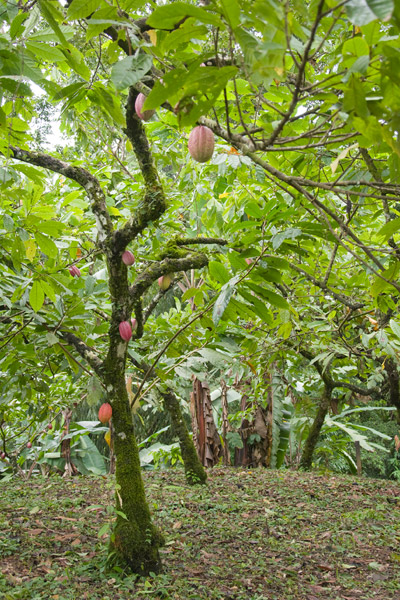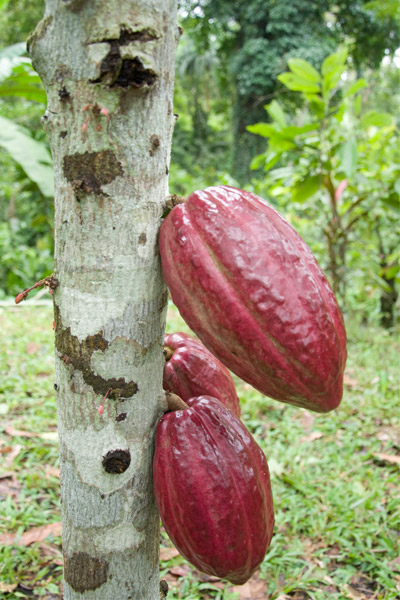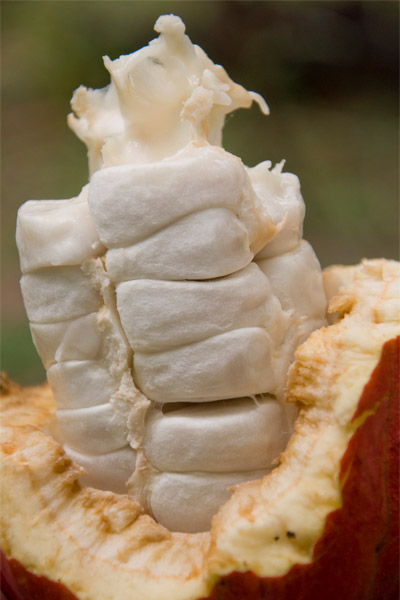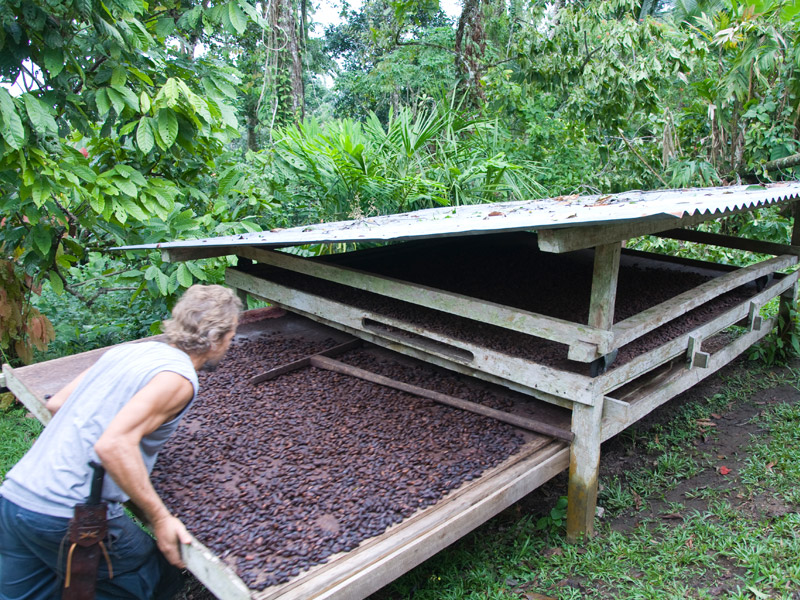The Cultivation of Cacao
 Before I began taking chocolate seriously as a career, I really had no idea where it came from (chocolate begins as a fruit? really?!?) Ignorance is bliss!…. but it’s not that interesting. Luckily enough, I had the chance to visit a real cacao farm in Costa Rica to see how chocolate was made and do the other thing that I am most passionate about in life, take pictures!! All chocolate begins with the cacao tree, Theobroma Cacao meaning “food of the gods”.
Before I began taking chocolate seriously as a career, I really had no idea where it came from (chocolate begins as a fruit? really?!?) Ignorance is bliss!…. but it’s not that interesting. Luckily enough, I had the chance to visit a real cacao farm in Costa Rica to see how chocolate was made and do the other thing that I am most passionate about in life, take pictures!! All chocolate begins with the cacao tree, Theobroma Cacao meaning “food of the gods”.
A native to the Amazon rain forest, the cacao tree requires a warm humid climate with frequent rainfall and well drained soil. Therefore thriving within tropical climates 20 degrees north and south of the equator. Young trees are often grown under the shelter of taller trees such as banana or coconut palms. This canopy helps to create protection from the direct heat of the sun and any strong winds. Thus limiting their size and making harvesting easier.
 Tiny pink and white flowers grow directly from the tree branches and give way to fruit after pollination. Cacao fruit otherwise known as pods, can grow anywhere from 8 to 12 in. long and may vary in color. Hue changes as they ripen but most turn deep red or yellow.
Tiny pink and white flowers grow directly from the tree branches and give way to fruit after pollination. Cacao fruit otherwise known as pods, can grow anywhere from 8 to 12 in. long and may vary in color. Hue changes as they ripen but most turn deep red or yellow.
Experienced pickers know the pods are ready for harvest by the sound when it’s tapped on. Picking is done by hand and each pod must be carefully cut from it’s branch to avoid damage to this highly sensitive tree. Machete’s are used for low branches and a curved knife fixed to a pole for those that are out of reach. Machete’s are also used to split the pods open by hand. Each pod contains anywhere from 20 to 60 seeds, which are embedded in a think sugary pulp.These insides are scooped out and the outside of the pod, or rind is discarded. Farmers will usually use these rinds as fertilizer to help redistribute nutrients to the soil. 
The seeds within the pulp are then fermented, a crucial process in creating quality cocoa beans. Each farm may use slightly different methods from the next, where some use solely banana leaves the farmer here in Costa Rica built teared wooden boxes with slats to help aid in the process. The seeds, within the pulp are placed in the top tear of the box and covered with banana leaves. The high sugar content speeds up the transformation in which the pulp turns acidic, during this time the temperature rises and creates a chemical reaction within the seed. Dramatic changes occur and the seed then develops it’s chocolate notes and turns dark in color, now being more referred to as a bean. This may take place for up to a week but actual number of days depends on the method and the type of bean. About half way through the process the farmer will stir and turn the beans onto the second tear introducing more air and freeing up the top tear for another round of newly harvested seeds.
 Next the beans must be dried slowly to reduce moisture and give the chemical reaction that begun during fermentation time to finish. All of the best beans are dried in the sun, usually for a period of a week. On this farm beans are spread out on these drying racks and turned frequently with a wooden rake to aerate them, ensure even drying and prevent mildew. These racks are also built on rollers and include a cover so they can be easily protected from sudden rainfall. Various methods of drying can be used but often run the risk of contamination from foreign odors the beans so easily absorb.
Next the beans must be dried slowly to reduce moisture and give the chemical reaction that begun during fermentation time to finish. All of the best beans are dried in the sun, usually for a period of a week. On this farm beans are spread out on these drying racks and turned frequently with a wooden rake to aerate them, ensure even drying and prevent mildew. These racks are also built on rollers and include a cover so they can be easily protected from sudden rainfall. Various methods of drying can be used but often run the risk of contamination from foreign odors the beans so easily absorb.
On this farm they roast their beans and make their own chocolate, which I will go more into more detail about in my next post. A special thanks goes out to Marco and his family at ChocoRart in Costa Rica for being so hospitable in giving us a tour of their farm. Check out my facebook page for even more photos!
